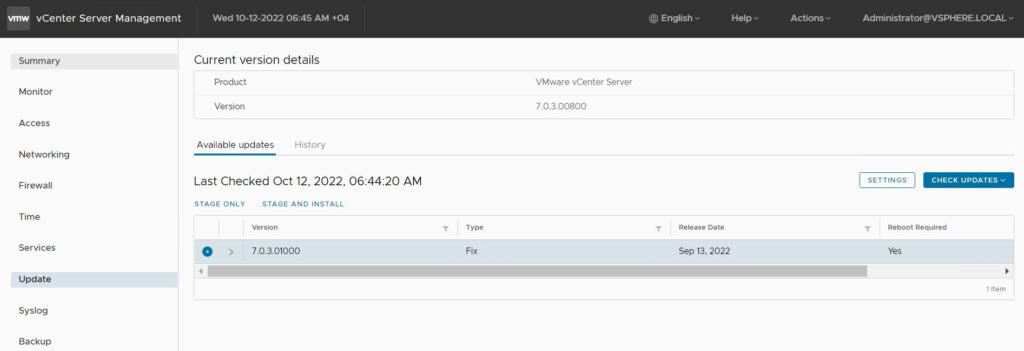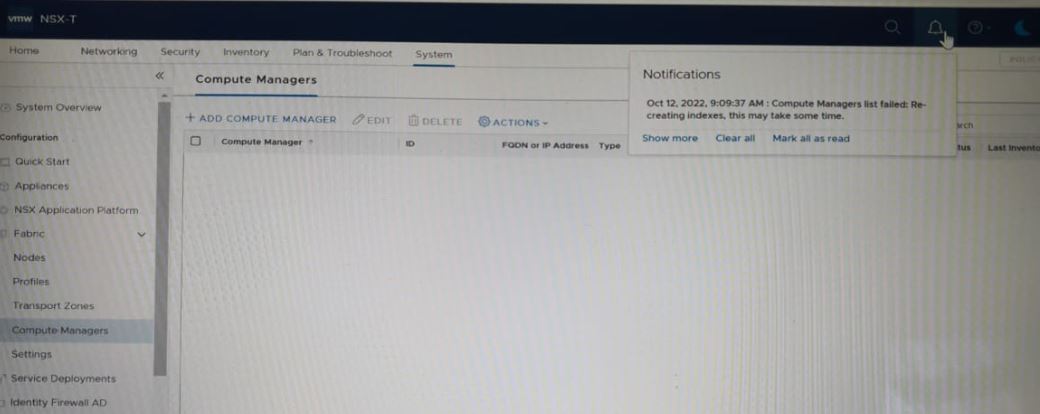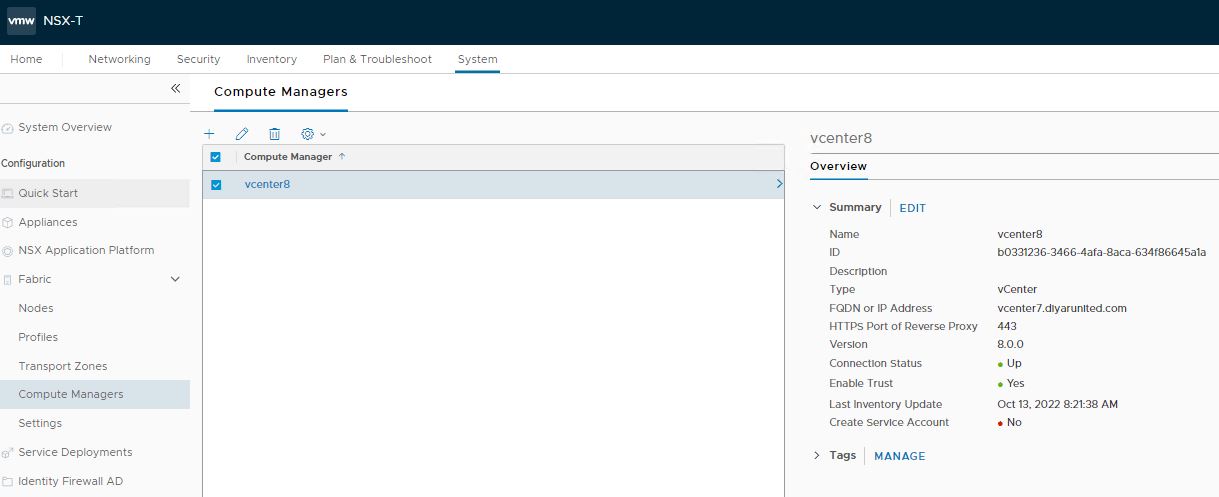
Introduction
VMware just made public the “initial” release of vSphere, vCenter, and vSAN 8.0. Obviously, the first thing to do is to test the releases in a testing environment to make sure everything works as it is supposed to but more importantly figure out the gotchas faced which is always different based on your environment.
This is an initial Availability release not a Generally Availability release, which means VMware will wait for customer/community feedback before releasing it into GA.
This is a lab environment so it is built to constantly break and get re-built so take caution if you are going to attempt this first release in a production environment. Here are some of the first things that need to be digested:
- vSphere 8 Release Notes: https://docs.vmware.com/en/VMware-vSphere/8.0/rn/vmware-vsphere-80-release-notes/index.html
– - vSAN 8 Release Notes: https://docs.vmware.com/en/VMware-vSphere/8.0/rn/vmware-vsan-80-release-notes/index.html
– - Hardware Compatibility: https://www.vmware.com/resources/compatibility/search.php
– - Software Interoperability: https://interopmatrix.vmware.com/Interoperability
– - vCenter 8 Upgrade: https://docs.vmware.com/en/VMware-vSphere/8.0/vsphere-esxi-upgrade/GUID-65B5B313-3DBB-4490-82D2-A225446F4C99.html
– - vSphere 8 Upgrade: https://docs.vmware.com/en/VMware-vSphere/8.0/vsphere-esxi-upgrade/GUID-65B5B313-3DBB-4490-82D2-A225446F4C99.html
– - vSphere 8 with Tanzu: https://docs.vmware.com/en/VMware-vSphere/8.0/rn/vmware-vsphere-with-tanzu-80-release-notes/index.html
– - Upgrade vSphere/vCenter Scenarios: https://core.vmware.com/resource/vsphere-8-upgrade-scenarios
Gotchas
Being a lab environment, I have all kinds of stuff configured so it was bound that something would break during the upgrade process, here are some gotchas:
- This is an initial first release so things are bound to be obscure and fuzzy. I would not upgrade, as of now, a production environment unless everything has been really tested in a testing environment and there is a real/must technical advantage from doing an upgrade.
– - vCenter 6.7 u3 can be directly upgraded to vCenter 8.0 . vCenter 6.5 must be first upgraded to vCenter 6.7 u3 then can be upgraded to vCenter 8.0 . ESXi 6.7 u3 can be upgraded to ESXi 8.0 directly while ESXi 6.5 needs to be upgraded to ESXi 6.7 u3 first then upgraded to ESXi 8.0 .
– - NSX is not yet supported for an upgrade, well it is but the required components for the upgrade are not yet available so if attempting to upgrade from vSphere 7 to vSphere 8 with NSX installed, things are going to break such as the Compute Manager connection although quite interestingly, overlay continues to work. To be honest, even the interoperability guide does not give any information on NSX with vSphere/vCenter 8 but the upgrade guides do include the how to on upgrading a vSphere with NSX although the required NSX Kernel module to build a vSphere 8 image with supported VIB is not found on the download page: https://docs.vmware.com/en/VMware-vSphere/8.0/vsphere-esxi-upgrade/GUID-64936DC3-8BA8-45F6-9A37-16B1C7E095C2.html .
–
Update: After waiting a couple of hours, NSX Manager actually re-built the index and registered again with the new vCenter 8 without any manual intervention so that continues to work fine, of course pending VMware release of the required ESXi networking module to upgrade vSphere accordingly. Patience does pay off 🙂 .
– - You cannot upload the vSphere 8 ISO to Lifecycle Manager until vCenter has been upgraded to 8.0 .
– - vSphere hosts need to be fully patched before upgrading to vSphere 8.0 incase any VMware native VIBs were not updated. That been said, many custom VIBs are going to conflict preventing the upgrade so either wait for the respective vendor to release supported VIBs before you upgrade or you will have to remove the solution (like I did with NSX for the sake of this blog).
– - Just FYI, DPU’s cannot be installed in brownfield deployments, so it must be a greenfield in which servers were ordered with DPU installed on a supported hardware platform. DPUs are currently limited to one DPU per physical server and they do not require a special license (that’s a miracle!).
– - If you are running vSphere with Tanzu Services then your supervisor cluster control plane nodes need to be upgraded to at least 1.21 preferably the latest release of Kubernetes even. During vCenter and then vSphere upgrade, Lifecyle manager will handle the upgrade for TKG from 1.0 to 2.0 . Because TKG in this lab was based on NSX-T, and I had to remove the NSX-T VIBs to upgrade the hosts, I could not show you the end result of the upgraded TKG.
– - Don’t forget the new licenses required which would be an evaluation in a lab or you will need to upgrade your existing license if you have an active support contract.
Upgrade
Let us start with upgrading vCenter 7.0.3 to vCenter 8.0 which requires first a download of the new vCenter ISO from myvmware.com . Mount the ISO afterwards and run the installer Upgrade to start the procedure after making sure that a snapshot and backup has been taken of your current vCenter.






Try not to use an ESXi host for the deployment target but rather the vCenter itself in order for Distributed Port Groups to show up later on, this is a must if you only have 2 NICs already on a port group.






The below are just temporary until the vCenter is migrated after which it will assume the original hostname and IP of the vCenter you are upgrading and the earlier would be shutdown though not deleted.









As you can see above, there are a lot of errors popping up prior to the actual migration of vCenter from 7.0 to 8.0 . You will need to go through each one of these error and figure out if that is something you can mitigate, live with, or cannot risk. The only risky error is the unsupported extensions such as NSX which actually broke post upgrade of vCenter though NSX overlay kept working yet the console was practically broken (vCenter Compute Manager disappeared with error rebuilding index). Since I needed to remove the vSphere VIBs anyhow, I did not try to re-register the extension and see if that sorts it out.

Update: After waiting a couple of hours, NSX Manager actually re-built the index and registered again with the new vCenter 8 without any manual intervention so that continues to work fine, of course pending VMware release of the required ESXi networking module to upgrade vSphere hosts accordingly.

Anyhow, moving on with the upgrade of vCenter 7 to 8 in deciding what is to be migrated as part of the post migration process.







Conclusion


Everything looks to be working fine as of now so next up is upgrading vSphere 7 to vSphere 8 so stay tuned.